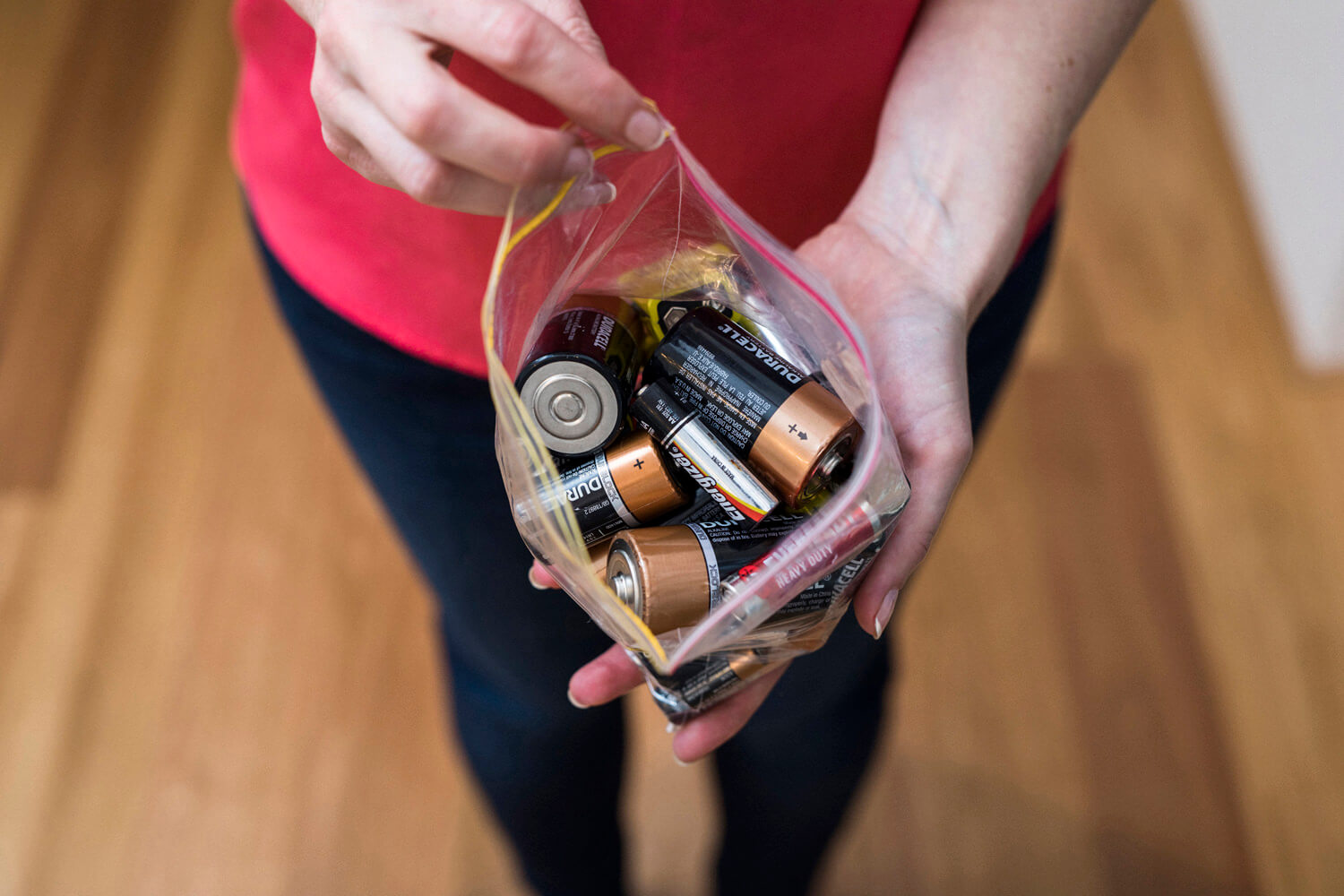There is an abundance of small things lurking in your drawers that should NEVER be placed in your general rubbish bin.
For a full list of common items that are deemed 'hazardous', and what to do with them, click here but here are some common offenders:
300 million batteries (8,000+ tonnes) are thrown out by Australians each year, ending up in landfill – that equates to 124 batteries per person, per year.
Batteries are the most common form of household hazardous waste – and one that could easily be significantly reduced, or eliminated entirely, from landfill with a small amount of effort.
What’s the big problem?
Batteries are full of heavy metals and harmful elements such as cadmium, lead, mercury, and nickel. These contaminate soil and water posing a danger to humans and wildlife.
What can you do?
Firstly we all need to stop putting batteries in the bin at the end of their life! Why not start a small container (making sure it’s not accessible to animals or children) and once this fills up with drop it in at an ALDI supermarket , IKEA and Battery World store, all of which run recycling programs for single use and rechargeable household batteries.
Secondly invest in rechargeable batteries – each battery has the potential to replace 1000+ non-rechargeable ones in its lifetime.
And finally, think whether you really need the battery-powered appliances in the first place.
For tips on how to recycle other types of batteries visit the Recycling Near You website and enter your postcode.
Did you know it can take 400+ years for a printer cartridge to break down in landfill?
Australians throw out more than 18 million printer cartridges in the year – at home and in our workplaces.
What’s the big problem?
Printer cartridges are made up of a complex combination of plastics, metals, foam, ink and toner. Not only do these materials take a long time to break down, they also have the potential to contaminate our water when they are disposed of in landfill.
What can you do?
Almost all of the material that is used to create a printer cartridge is recoverable – it just needs to be separated before it can be recycled.
While these can’t be placed in your household recycling bin they are still easy and free to recycle.
You can drop off your used or empty laser and inkjet cartridges at Officeworks as well as participating Australia Post, Harvey Norman, The Good Guys, JB Hi-Fi, Office National and Office Products Depot outlets. Or if you’re a business or school you might even be eligible for a free collection box.
For more information and to find a local drop off point visit the Recycling Near You website and enter your postcode.
Australians are the biggest consumers of paper in the world – at a whopping 230kg per person annually.
Junk mail makes up an astonishing, 6% of Australia's total paper usage, adding up to 240,000 tonnes of paper each year.
We collect and consume a lot of paper in our homes – much of it is consumed briefly and then thrown away, or tucked away in cupboards and drawers.
What’s the big problem?
It takes around 17 trees, 31,400 litres of water, 4,200 kilowatt hours of energy, 1,600 litres of oil to produce every tonne of paper. Preventing this waste would save around 2.3 cubic metres of landfill and avoid 26kg of air pollutants.
What can you do?
Reducing the volume of paper in our lives may be easier than you think.
A first good step is saying no to junk mail. You can go even further though by switching to paperless billing for as many things as possible.
From there consider switching to online newspaper and magazine subscriptions and dusting off your library card. If you’re an avid reader consider whether an e-reader might be a worth-while investment (but remember to recycle it at the end of its life).
And of course, always make sure you place any paper waste in your yellow-topped recycling bin!
